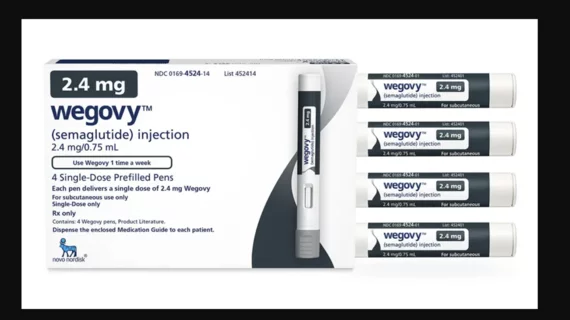New formula could mean diabetes and weight loss drugs such as semaglutide are only needed every 4 months
GLP-1 agonists such as semaglutide and liraglutide can help patients with type 2 diabetes improve their blood sugar levels, lose weight and even improve their overall cardiovascular health. But these drugs are often taken as daily or weekly injections, meaning there is an inherent risk that adherence will suffer as time goes on. This could make the therapies less effective and cause patients to grow frustrated.
According to a new study published in Cell Reports Medicine, however, those patients could potentially be taking GLP-1 agonists much less frequently in the future.[1] A team of specialists out of Stanford University have developed a new injectable hydrogel drug delivery system that helps medications slowly dissipate over time as opposed to hitting the patient all at once. This means a drug such as semaglutide could potentially be injected just once every four months and still have the same clinical impact it would have being injected weekly.
“Adherence is one of the biggest challenges in type 2 diabetes management,” senior author Eric Appel, PhD, associate professor of materials science and engineering at Stanford, said in a prepared statement. “Needing only three shots a year would make it much easier for people with diabetes or obesity to stick with their drug regimens.”
Appel et al. tested their new hydrogel on laboratory rats, finding significant success. Testing the new drug delivery system on pigs is the team’s next step, and then they hope they can start planning human trials.
“At the very least, we have laid a pathway for the prolonged release of therapeutic GLP-1–based anti-diabetic and anti-obesity treatments that could have beneficial impact on type 2 diabetes management and, perhaps, other conditions as well,” Appel said in the same statement.
How the new hydrogel drug delivery system for GLP-1 agonists works
This new-look hydrogel is made up of a mesh of polymers and nanoparticles specifically designed to be weakly bound together. As this mesh starts to dissolve, the drug is gradually released.
“Our hydrogel melts away over many months like a sugar cube dissolving in water, molecule by molecule,” Appel said. “I often refer to the mesh being held together by a sort of molecular Velcro that sticks together quite well, but then can be easily pulled apart.”
The hydrogel is injected using any traditional needle. Injections will typically occur in a “convenient” location such as under the patient’s arm. The clinician and patient must both remember that the hydrogel will be present under the skin as it dissipates.
Click here for the full analysis.

